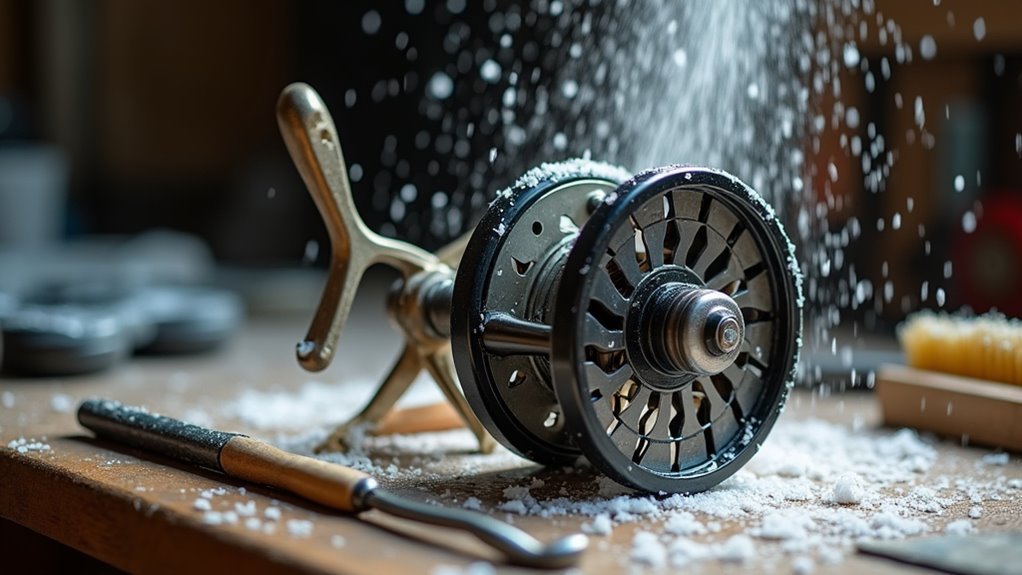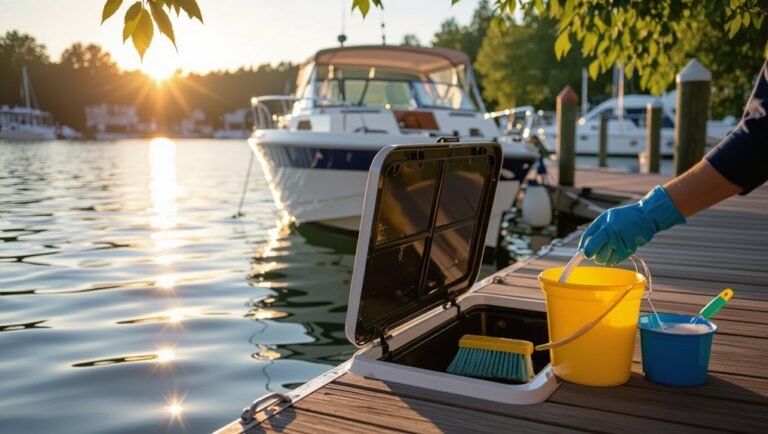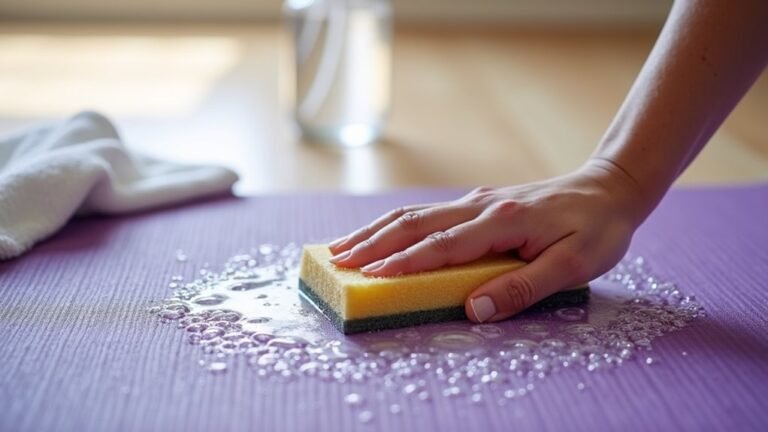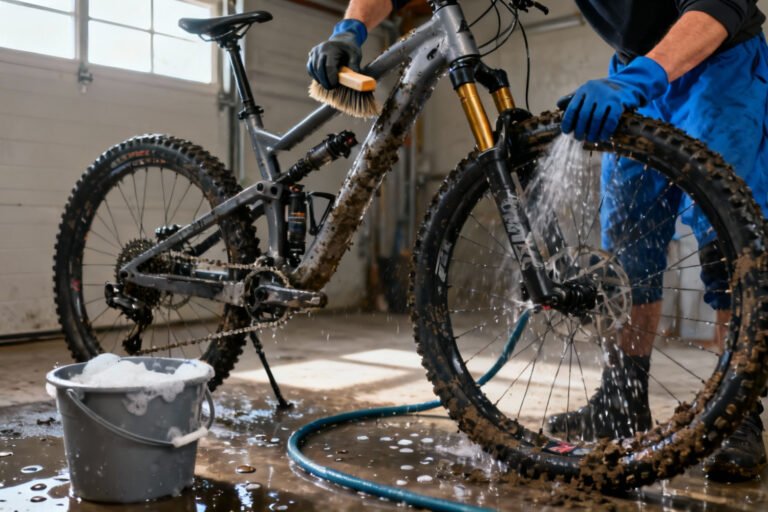After a fun day of saltwater fishing, it’s tempting to rush home and relax, forgetting about our fishing gear. But not cleaning your reel is a big mistake. Salt can rust and break down even expensive reels if you don’t clean them properly. According to Captain John Burr, a professional fishing guide with over 20 years of experience in Florida waters, “The most important thing you can do for your reel is to rinse it with fresh water right after you get off the water. Don’t wait until you get home.” We’ll show you an easy cleaning process that takes just a few minutes but can save you from having to buy new reels. It’s not complicated, but you need to do it at the right time.
Some of the links in this article may be affiliate links. If you make a purchase through these links, we may earn a small commission at no extra cost to you. Thank you.
Salt Destroys Reels Fast

Why is it that even the most expensive reels can fall victim to saltwater damage so quickly?
It’s almost shocking, really.
Whether you’ve spent $1500 or just $25, salt doesn’t discriminate – it corrodes internal components and hardens between drag washers within a day.
Salt is the great equalizer – luxury reels and budget options alike surrender to its corrosive attack without proper care.
We’ve seen it happen countless times.
That salt residue will make your drag skip or stick when you’re fighting that trophy catch you’ve waited all day for. Regular cleaning and proper care can help prevent oxidation buildup and extend the life of your fishing reel.
##
Let’s walk through what you should and shouldn’t do when cleaning your fishing reel after a salty day on the surf.
We’ll cover the essential steps from initial rinse to final reassembly, showing you how to protect your investment from corrosion. Regular cleaning is essential for maintaining boat’s appearance and value and ensuring optimal performance.
I think you’ll find this process surprisingly simple once you’ve done it a few times.
Things to Do When Cleaning A fishing reel after saltwater use
Cleaning your fishing reel after saltwater exposure is essential to prevent corrosion and extend its lifespan.
Salt crystals left on your equipment can quickly deteriorate metal components and compromise the reel’s performance, potentially leading to expensive repairs or replacements.
A thorough cleaning process removes these damaging elements and maintains the smooth operation of your valuable fishing gear.
- Immediate rinse: Hose off the reel with fresh water within 10 minutes after saltwater use to remove surface salt before it can cause corrosion.
- Disassemble carefully: Remove the spool and drag washers, paying attention to their original positions for proper reassembly.
- Clean with WD-40: Spray components with WD-40 to dissolve salt residues, particularly on drag washers and other mechanical parts.
- Back off the drag: For baitcasting reels, completely loosen the drag before cleaning to protect internal components.
- Inspect for debris: Check all parts, especially the handle collar and interior, for sand or debris using Q-tips for hard-to-reach areas.
- Thorough drying: Allow all components to dry completely before reassembly, particularly drag washers to maintain their functionality.
- Proper lubrication: Apply 1-2 drops of fine reel oil to the level wind and 2-3 drops to the line roller on baitcasting reels after cleaning.
- Check moving parts: Make sure all moving components operate smoothly before final assembly and storage.
Things to Avoid When Cleaning A fishing reel after saltwater use
Cleaning your fishing reel after saltwater exposure is essential for maintaining its longevity and performance, but certain practices can actually cause more harm than good.
Proper cleaning technique protects your valuable equipment from corrosion and mechanical failures, ensuring it remains reliable for years of successful fishing trips.
- Delaying the cleaning process: Salt hardens within hours, potentially ruining drag washers and other components, leading to equipment failure on future trips.
- Deep disassembly of the reel: Most anglers should avoid complete disassembly and leave this to professionals at tackle shops to prevent accidental damage to internal parts.
- Using high-pressure water jets: Strong water pressure can force sand and debris deeper into the reel’s mechanisms, accelerating corrosion and reducing functionality.
- Cleaning baitcasting reels without backing off the drag: Failing to loosen the drag system before cleaning can damage it, causing issues like skipping or sticking during use.
- Reassembling while wet: Putting your reel back together before it’s completely dry traps moisture inside, causing rust on gears and bearings that shortens lifespan and degrades performance.
Steps
Properly cleaning your fishing reel after saltwater exposure is essential for maintaining its performance and extending its lifespan.
Saltwater is highly corrosive and can quickly damage the delicate components of your reel if left untreated.
The cleaning process differs slightly between spinning and baitcasting reels, but both require thorough attention to prevent salt crystallization and corrosion that can ruin your expensive equipment.
Step 1: Rinse the entire reel thoroughly with fresh water immediately after saltwater use, spending about 10 minutes to remove all surface salt.
Step 2: For spinning reels, remove the spool and drag washers; for baitcasting reels, back off the drag completely before cleaning.
Step 3: Apply WD-40 or similar lubricant to dissolve residues, letting it sit for two minutes before rinsing again.
Step 4: Inspect and clean specific areas like the handle collar and spool interior using Q-tips or paper towels to remove sand or debris.
Step 5: Verify grease presence in gears and bearings, adding fresh grease if needed.
Step 6: Apply 1-2 drops of reel oil to moving parts such as the level wind and line roller.
Step 7: Add grease to critical areas like the pinion gear and anti-reverse clutch to create a water barrier.
Step 8: Reassemble all components, ensuring everything is properly seated and secured.
Final Thoughts
While maintaining your fishing reel might seem like a chore, we’ve found that the time invested pays off tremendously in the long run.
Clean only when necessary—after sand exposure or a dunk in water—and don’t overdo it.
##

Proper maintenance of your fishing reels after saltwater exposure isn’t just about preserving an investment—it’s about ensuring reliability when that trophy fish strikes.
The simple 10-minute cleaning routine outlined here can literally add years to your gear’s life while maintaining peak performance when you need it most.
Remember that salt is relentless and works quickly; even waiting until the next day to rinse your equipment can lead to permanent damage. Avoid rushing the cleaning process to prevent mistakes and ensure your gear remains in top condition.
Salt attacks equipment with ruthless efficiency—delay rinsing even one day and you risk irreversible damage.
By making immediate rinsing and proper cleaning part of your post-fishing ritual, you protect vital components like drag washers and internal gears from corrosion and failure.
Take pride in your equipment by backing off drags, applying the right lubricants in the right places, and thoroughly drying everything before storage.
These small efforts pay massive dividends in the longevity and functionality of your gear.
Don’t let your next big catch slip away because of preventable equipment failure.
Start implementing these cleaning habits after your very next saltwater outing—your future self (and your wallet) will thank you when you’re still using the same reliable reels seasons from now.






